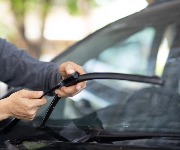Private schools: Labour’s plans for VAT and tips to afford independent school fees

With Labour’s plan to add VAT to private school fees dividing opinion throughout the UK, we look at how you can meet the cost of your children’s education.
As the race for political power got underway this month, one issue proved surprisingly controversial for many parents – VAT on independent school fees.
During the run-up to the election, Labour unveiled plans to add VAT to private school fees, pledging that it would use these funds to increase the number of teachers in state schools.
Many supporters believe Labour’s plan will be an effective way to raise public funds and to introduce greater equality into the education system.
In contrast, opponents argue that the cost will ultimately fall on parents – many of whom may already be struggling to meet the rising cost of fees.
Likewise, some critics argue that the plans could force children out of schools in which they are thriving.
Worryingly for these parents, research from the Independent Schools Council has found that the average day fee increased by 8% this year to £6,021 per term or £18,064 per year.
And, of course, these costs would only increase if Labour’s plans do get the green light.
What Labour’s landslide means for your money
How to beat the school fee hike
While it is important to stress that there will unlikely be a formal decision over this issue until Rachel Reeves delivers her first Budget, it does seem that the changes will likely go ahead.
With this in mind, investment firm Hargreaves Lansdown has put together a selection of tips outlining how parents can meet the cost of sending their children to an independent school.
Here are the highlights.
7 in 10 worse off under Labour: shock loveMONEY poll
1. Plan early
Even if your children are very young (or you’re only at the family planning stage), it’s never too early to consider how you’ll finance their education.
It goes without saying that the longer your cash is stashed away in savings or investments, the more time it will have to grow.
Say, for example, you started investing in the stock market shortly after your child’s birth, your money would benefit from over 10 years’ growth before they started secondary school.
If you’re planning to ask other family members for help, try to do so as soon as possible. This will allow them time to factor any gifts into their own financial planning.
Lower-risk investing: your options, potential returns and how to get started
2. Get the best return on your savings
As Hargreaves Lansdown points out, keeping your money in cash is typically your best option if you’ll need to access these funds within one to five years.
If you won’t need to tap into your savings before your children start school, you’ll likely get the best return if you opt for a fixed-rate savings account.
But even if you’ll need to dip into these funds from time-to-time, it’s sensible to look for the highest-paying easy access accounts on the market.
3. Consider offsetting
If you’re convinced that an independent school is the right option for your child, you may be considering remortgaging to free up equity.
However, as Hargreaves Lansdown points out, you’ll likely want to avoid the fees involved in frequently remortgaging.
A possible alternative is to switch to an offset mortgage (in which your savings are set against the size of your home loan to reduce the amount of interest you need to pay).
This approach would allow you to keep money for school fees in a linked savings account and reduce the size of your mortgage bill.
Furthermore, you can add to the account if you come into any windfalls.
4. Investigate education trusts
Setting up a trust and naming your child as the beneficiary can be one of the safest ways to finance their education.
What’s more, this approach can help ensure that the money is used for its intended purpose.
Should you pass away while your children are still young, a trust can also give you the reassurance of knowing that the cost of their education will be covered.
However, you should be aware that creating a trust will involve initial set-up costs and ongoing maintenance fees.
The best bank accounts for kids and teenagers
5. Look into help from the school
According to Hargreaves Lansdown, more than a third of children who attend private school receive help with their fees.
Although this support typically falls well short of the total amount, it is worth asking the school about any assistance available.
Be aware, however, that 14% of support is reserved for specific groups, such as the children of military personnel or school staff.
Some 11% of funding is allocated to scholarships and another 7% is reserved for means-tested bursaries.
Have your say
With the debate surrounding this topic unlikely to die down soon, we’d love to hear your thoughts on the matter.
Do you agree that Labour’s plan will punish parents who may already be struggling to provide their children with the best start possible?
Or perhaps you believe the public school system is unfair and the plans surrounding VAT will bring much-needed funds into the government purse.
Let us know in the comments section below.
Most Recent
Comments
Be the first to comment
Do you want to comment on this article? You need to be signed in for this feature








